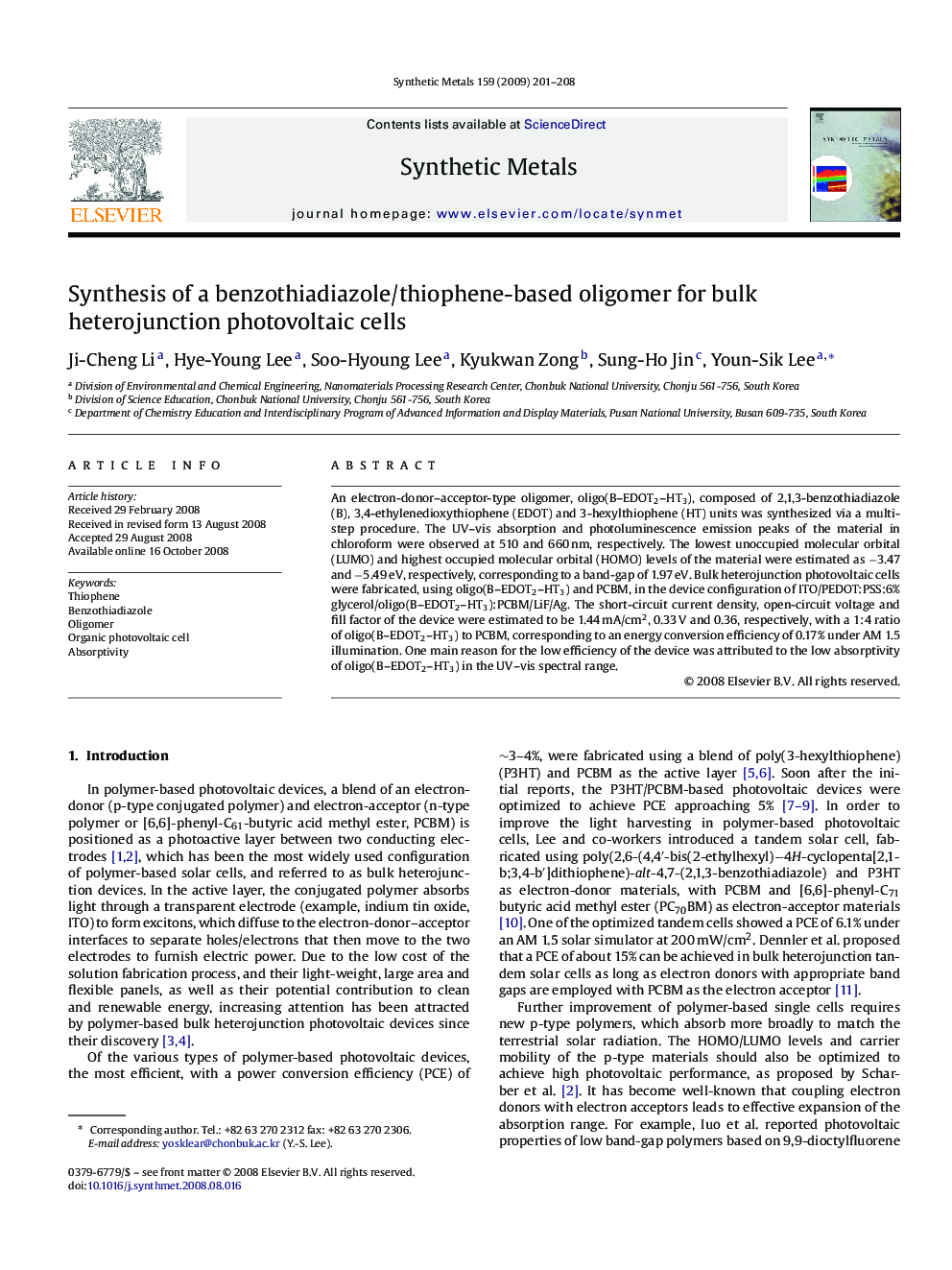| کد مقاله | کد نشریه | سال انتشار | مقاله انگلیسی | نسخه تمام متن |
|---|---|---|---|---|
| 1443606 | 1509457 | 2009 | 8 صفحه PDF | دانلود رایگان |

An electron-donor–acceptor-type oligomer, oligo(B–EDOT2–HT3), composed of 2,1,3-benzothiadiazole (B), 3,4-ethylenedioxythiophene (EDOT) and 3-hexylthiophene (HT) units was synthesized via a multi-step procedure. The UV–vis absorption and photoluminescence emission peaks of the material in chloroform were observed at 510 and 660 nm, respectively. The lowest unoccupied molecular orbital (LUMO) and highest occupied molecular orbital (HOMO) levels of the material were estimated as −3.47 and −5.49 eV, respectively, corresponding to a band-gap of 1.97 eV. Bulk heterojunction photovoltaic cells were fabricated, using oligo(B–EDOT2–HT3) and PCBM, in the device configuration of ITO/PEDOT:PSS:6% glycerol/oligo(B–EDOT2–HT3):PCBM/LiF/Ag. The short-circuit current density, open-circuit voltage and fill factor of the device were estimated to be 1.44 mA/cm2, 0.33 V and 0.36, respectively, with a 1:4 ratio of oligo(B–EDOT2–HT3) to PCBM, corresponding to an energy conversion efficiency of 0.17% under AM 1.5 illumination. One main reason for the low efficiency of the device was attributed to the low absorptivity of oligo(B–EDOT2–HT3) in the UV–vis spectral range.
Journal: Synthetic Metals - Volume 159, Issues 3–4, February 2009, Pages 201–208